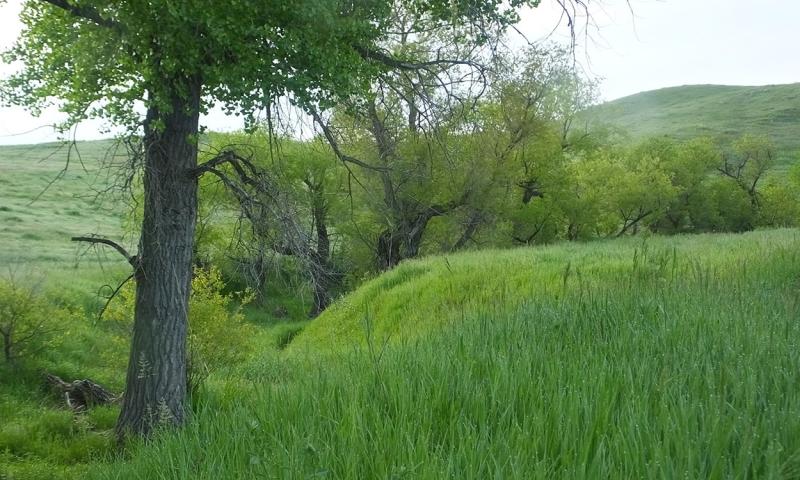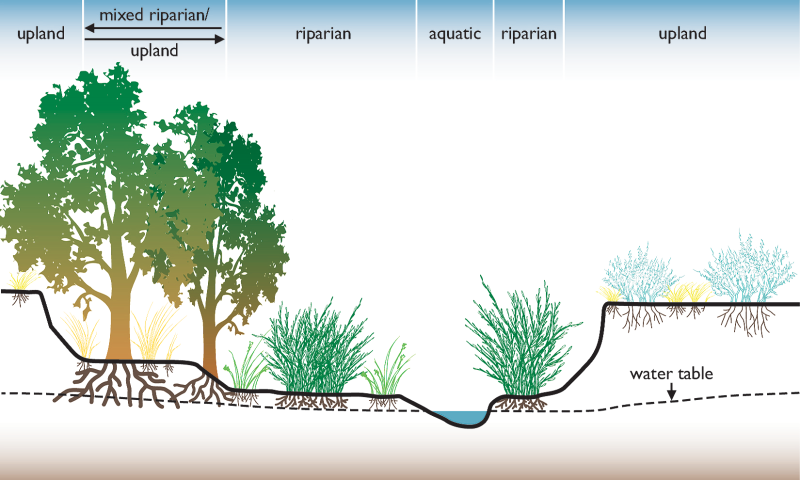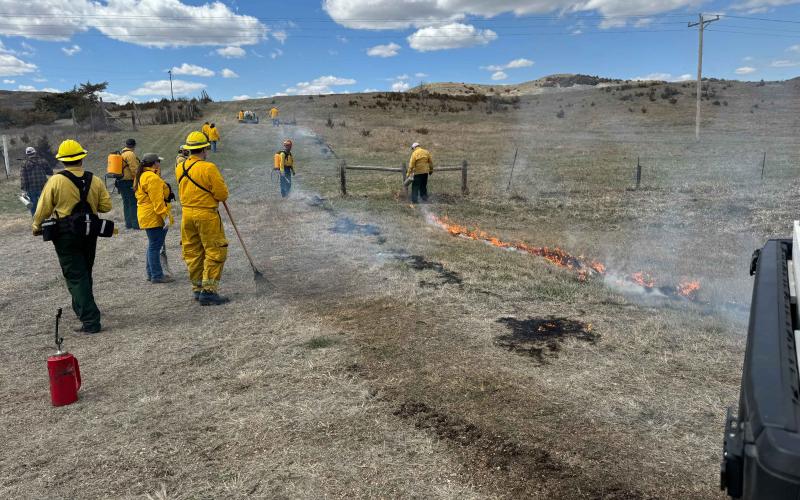
Riparian areas in western South Dakota, though comprising a small fraction of the landscape, are of outsized importance due to their role in the local ecosystem and their impact on agriculture and wildlife. These areas, characterized by their wetter, cooler environments with more plant variety compared to the surrounding plains, play a critical role in ecological stability and agricultural productivity.
Strengths of Riparian Vegetation
Riparian vegetation - the collection of plants that thrive along riverbanks and wetlands - provides numerous ecological benefits. These plants stabilize streambanks, reduce erosion, improve water quality, and support wildlife populations. Riparian vegetation helps to slow down water flow during floods, and, when combined with their complex root systems, helps maintain soil integrity and reduce sediment load in waterways. Moreover, riparian plants enhance landscape resilience to environmental changes and climatic fluctuations by providing essential ecosystem services, like flood mitigation and habitat for pollinators and other beneficial insects.
Hydrological Influence on Riparian Vegetation
Riparian vegetation is heavily influenced by water availability and flow patterns. In regions where water flow is seasonal or intermittent, such as many of the prairie streams in western South Dakota, the vegetation composition can vary significantly. During wet seasons, these areas flourish, supporting a wider range of plant and animal life. Conversely, during drier periods, the resilience and adaptability of these plants are tested, often resulting in a shift towards species that can tolerate lower water levels or, in some cases in western South Dakota, saline seeps. Plants that are indicative of saline environments and are found within them are foxtail barley and inland saltgrass.
Plant Community Types
There are several different plant community types that exist in and around riparian areas:
- Upland dry, short, to mixed grass prairie (such as western wheatgrass and blue grama).
- Woody riparian draw with trees and shrubs (such as willow, bur oak, and green ash).
- Aquatic.
- Upland dry shrubs (such as sagebrush, snowberry, and buffaloberry).
- Riparian forests (including cottonwood, willow, and boxelder).
- Wetland/wet meadow (such as prairie cordgrass and sedges).
Wetland Indicator Status
Riparian vegetation is categorized by its moisture needs through a wetland indicator status (Figure 1). This status describes how flexible a species is in relation to its moisture needs.

Wetland indicator status is often described as:
- Obligate Wetland: These species always occur in wetlands under natural conditions. Indicators of wet soil conditions during the growing season. Examples: cattail and species of bulrush.
- Facultative Wetland: Species that occur in wetlands over two-thirds of the time but are sometimes found in non-wetlands. Examples: willow species and prairie cordgrass.
- Facultative: Species that equally occur in wetlands and non-wetlands. Examples: green ash and cottonwood trees.
- Facultative Upland: Species that are mainly seen in wetlands the majority of the time but are occasionally (< 33%) found in wetlands. Examples: common sunflower and big bluestem.
- Obligate Upland: Species that always occur in non-wetlands under natural conditions. Examples: big sagebrush and blue grama.
For a complete list of species that are present in riparian areas and their associated wetland indicator status, consult the publication, Understanding Western South Dakota Prairie Streams.
Implications for Land Management and Conservation
The management of riparian areas is critical for maintaining the ecological health of prairie landscapes. Practices that protect and restore riparian zones are essential for preventing degradation and promoting resilience. Techniques, such as managed grazing and riparian restoration projects can enhance riparian health and function. Moreover, understanding the interactions between land use, water flow, and riparian vegetation can help in designing effective conservation strategies that benefit both working lands and conservation goals.


